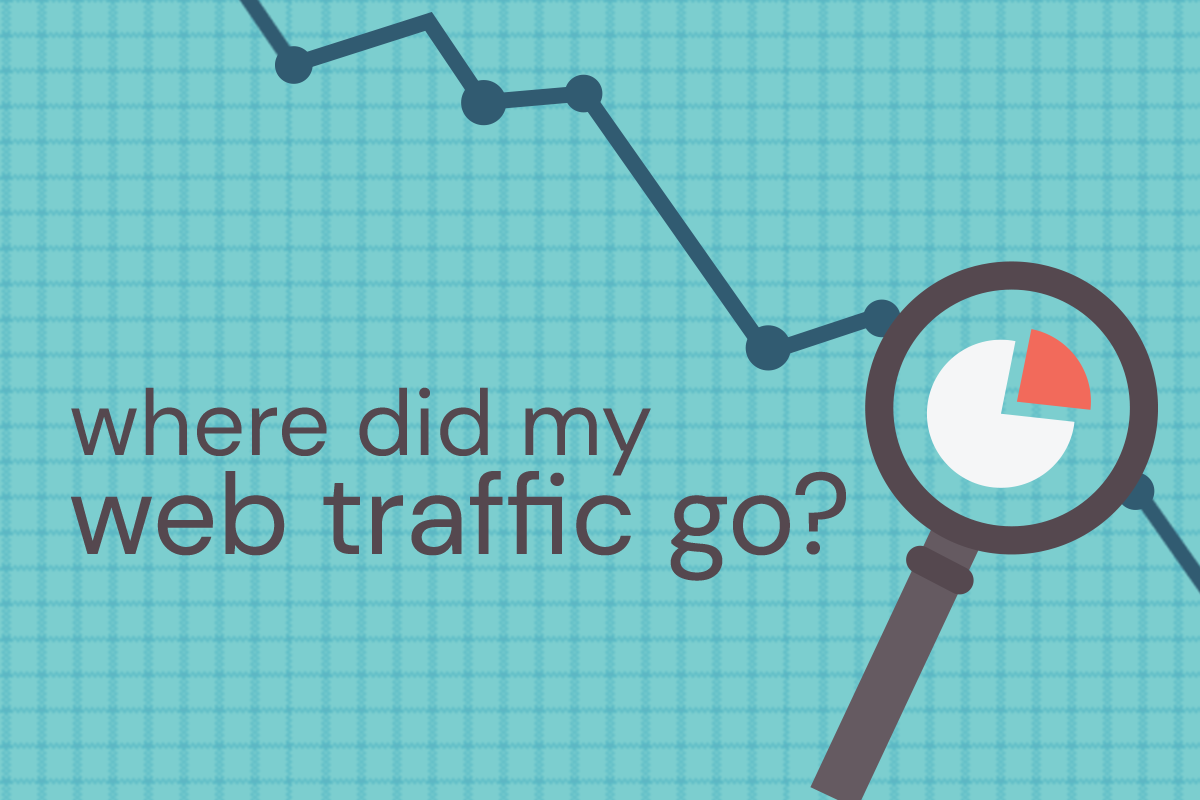If you have a website, there is only one thing worse than having your site down. You open up Google Analytics and, for some reason, your web traffic has plummeted. You may have been plugging away at your marketing, participating in social media, and otherwise doing all the right things. It can still happen to anyone. But don’t panic just yet.
Slow Versus Sudden Web Traffic Decline
First, you’ll need to ask yourself questions about the timing of your drop in traffic.
- Is it a sudden drop off… or is it more of a slow, steady decline?
- Did the traffic dip for just a few days, and if so is it recovering on its own?
If the traffic drop was sharp and sudden, you might be experiencing a Google penalty. A Google penalty can be either “manual” or “algorithmic.” To identify a manual Google penalty, log in to Google Webmaster Tools and check for any warning messages. Most manual penalties fall under these categories:
- Unnatural links to your site
- Hacked site
- Thin content
- Pure spam
- User-generated spam
- Cloaking and sneaky redirects
- Hidden text and keyword stuffing
- Spammy freehosts
- Spammy structured markup
In the event that Google Webmaster Tools reveals one of the above problems, you’ll have to fix it and then resubmit your site to Google, explaining that the issue is fixed.
Algorithmic Google penalties happen when Google changes its search algorithm. One of the biggest ones happened when Google started giving better pagerank to sites that work well on mobile devices. To see if your website has experienced an algorithmic penalty, check the authoritative Moz website for a timeline of Google algorithm changes and see if one coincides with your traffic drop.
If the dropoff was more gradual, you should definitely check to see if you had a similar pattern last year or the year below. It may be a reflection of a slow season. For example, a website that sells flowers would experience surges in traffic near Valentine’s Day and Mother’s Day, with an immediate sharp decline afterwards.
Analyze Web Traffic Sources
Next, ask yourself where your traffic is coming from. If one or more of these traffic sources take a dive, you’ll have some clues about the source of your problem:
- Direct traffic. Direct traffic comes from visitors who type your URL directly or click on their bookmark to get directly to your site.
- Organic traffic. These visitors arrive at your site by typing your URL into their browser or by clicking on a bookmark.
- Paid traffic. These visitors come to your site by clicking on a banner ad, Google ad, etc.
- Referral traffic. These visitors click on a link from another site to get to yours (also known as backlinks).
- Social traffic. These visitors come to your site via links on social media platforms, such as Twitter or Facebook.
If your paid traffic is the traffic dropping off, it’s easy to see that you’ve stopped purchasing ads or your ad keywords or placements are way out of whack. Or if your direct traffic has dropped, you may have a competitor who has launched a more successful campaign.
The second factor to analyze is your new versus returning visitors.
If your new visitor numbers have taken a dive, your keywords may need adjustment. Users might not be able to find your site based on the text and other content you’re using. It could also—as we discussed above—mean that you’re incurring some kind of Google penalty.
If your returning visitor numbers are tanking, it might be that there’s a problem with your site’s navigation or ease of use. For example, Flash-based websites don’t display properly on mobile devices, so anyone who arrives at your site via smartphone sees little or none of your content—and promptly bounces out of there. You might also take a look at your 404 (“not found”) errors or your site speed. If people are not finding what they need, or your site is significantly slower than average, many users will not stick around.
Need help diagnosing—and treating—your web traffic problems? What a coincidence; we do that. Contact us any time!






